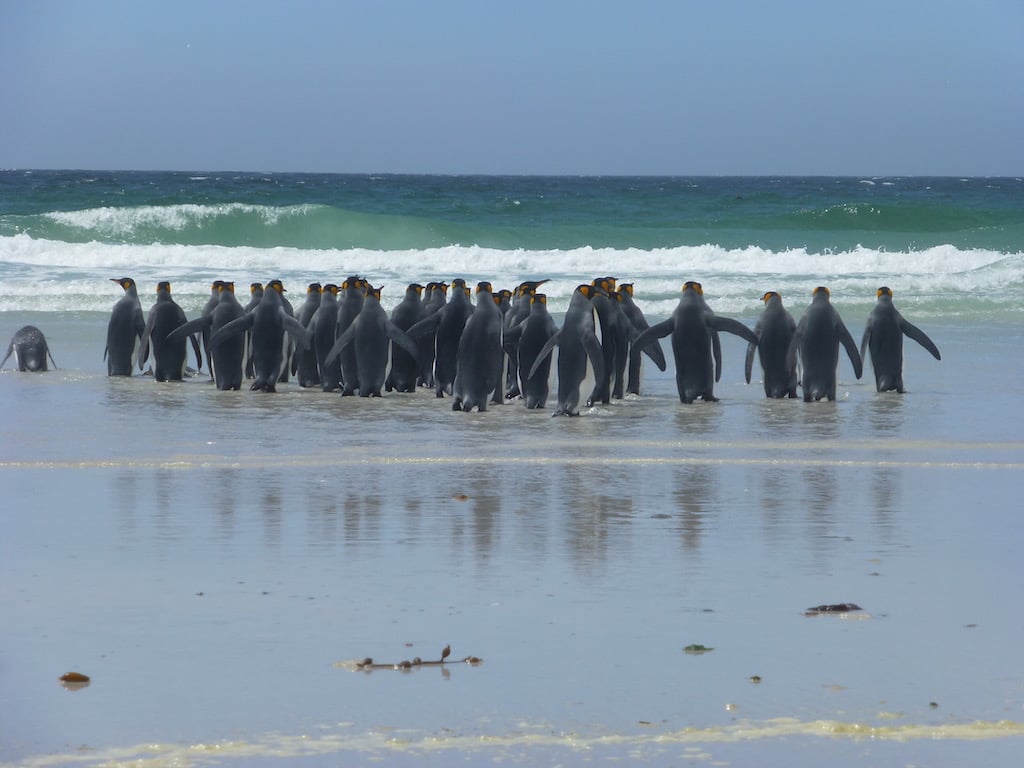Until the the war of 1982, most people had little or no idea, or interest, where the Falklands were. Whether re-capturing the Islands was political (it secured a further term for Mrs T), economic (the oil, fishing and gas could be worth £billions), the last vestige of defence of our former empire, or truly to protect the wishes of the population is the subject of much discussion.
Whatever the reason, the FI population are fiercely British, and this is a destination that absolutely should not be missed. The wildlife is beyond belief, and the scenery and isolation are heart-grabbing.
You need to like the wind and air travel to get the most from a trip, but it’s absolutely worth it.
Getting there
At the time I made the journey in January 2014, one of the simplest ways of getting to the Falklands was on an RAF transport plane, taking forces personnel to and from Stanley. Although other routes existed, including some direct “oil flights” from Gatwick, and civilian flights via Santiago, I chose the military route. The process at the time involved contacting an agent in London (not James Bond, but a government booking agent) who checked the MoD schedule, and then did or didn’t book you on. With family in the Falklands, my acceptance onto the flight was straightforward. I was looking to travel as early in January, simply so that I could transition straight from Christmas to the holiday. Brize Norton I duly arrived at Brize Norton on the 2rd January 2014 – due to take the first Southbound service of the year. The base is huge, but due to the time of year, was largely deserted. I completed the formalities at the gate, collected my mess token, and headed to the accommodation. The block was being refurbished, but was clean, and aside from the sign warning me of legionnaires disease if I drank the tap water, it was fine. I wandered to restaurant at my allotted time, had my dinner and moved to the bar. Christmas spirit was in short supply, and I guess anyone on the base was either heading out on a transport, or working. None were there because they wanted to be… After a couple of pints, and a decent night’s sleep, I was lining up with army personnel to register for my flight. It was weird beyond belief, standing in line with people carrying bergens, dressed in combat fatigues, and with their protective equipment. The flight destinations were the other sign that I was not somewhere usual. The one that stands out in my mind was Helmand. These guys were heading to an active combat zone, knowing they could be killed. The plane – a nearly new Voyager – was about 1/3 full, with a full 3rd given over to a flying hospital – another sobering thought. I settled in, and within a few hours, we landed at Ascension Island. Ascension Island Having arrived at Ascension and disembarked, we were told that due to logistical issues, we were going to have to overnight – as there was no pilot to take us further. I yomped from the airstrip to the accommodation which was utilitarian, dumped my bags, and went for a wander. I didn’t have long, and without any form of information, there was little to see. I soon found myself in the bar, watching EasterEnders in the middle of the Atlantic, drinking Fosters from a can. While in the bar I got chatting to one of the few other civilians from the flight – who turned out to be a resident of the islands, returning home in his capacity as vet. The next morning we embarked the Voyager, and set off for the second leg of the flight. All I remember is water, water, water, and more water below us.